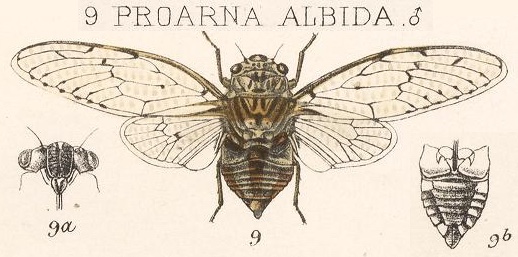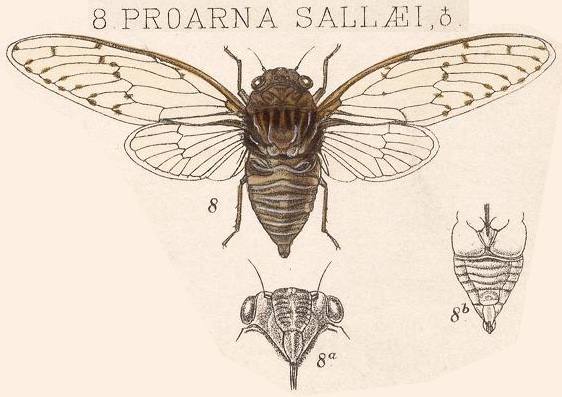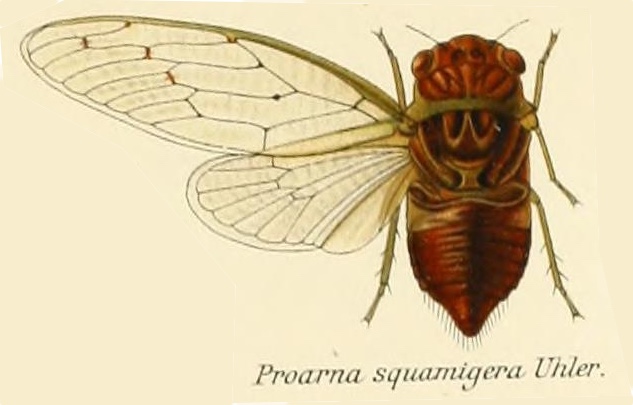This one’s a bit of a brain twister, so I’m going to dump some facts and run.
Proarna albida is a former name for two species: Proarna insignis Distant, 1881 and Proarna olivieri Metcalf, 1963.
Scientific classification down the genus:
Family: Cicadidae
Subfamily: Cicadinae
Tribe: Fidicinini
SubTribe: Guyalnina
Genus: Proarna
The image below might be either one…
Description for Proarna albida from Insecta. Rhynchota.:
This species is strikingly variable, both in size and also as regards the length of the second apical area of the tegmina. Stoll’s figure being very unsatisfactory, I have here figured a specimen from Costa Rica.
Found in: Costa Rica, Trinidad, Guyana, Suriname, and Brazil.
Description for Proarna insignis from Insecta. Rhynchota.:
Var. insignis:
Body much broader than in any varietal forms of P. albida which have passed through my hands, lateral margins of pronotum more ampliated, markings of the tegmina darker and more distinct.
Long. 24 millim., exp. tegm. 63 millim.
Three females possessing this form have passed through my hands. As I have not seen the their sex, and can find no sufficient structural character in the female of specific value, I have felt it necessary to give a varietal name for the present, to prevent confusion.
Found in NicaraPanamand Panama.
For comparison sake, P. olivieri is found in Mexico, Guatemala, Costa Rica, Venezuela, Brazil, Guyana, French Guiana, Surinam, Trinidad and Tobago, Jamaica, Cuba, Central America, South America. All over the place. From the notes within the Catalogue of the Cicadoidea (Hemiptera: Auchenorrhyncha).
Whatever the latest name for Proarna albida is, it’s a nice looking cicada:

References:
- The illustration comes from Biologia Centrali-Americana. Insecta. Rhynchota. Hemiptera-Homoptera. Vol. 1. By W. L. Distant F.E.S. and The Rev. Canon W. W. Fowler, F.L.S. (1881-1905). Read it on the Biodiversity Heritage Library website.
- Name information from Allen Sanborn’s Catalogue of the Cicadoidea (Hemiptera: Auchenorrhyncha).



